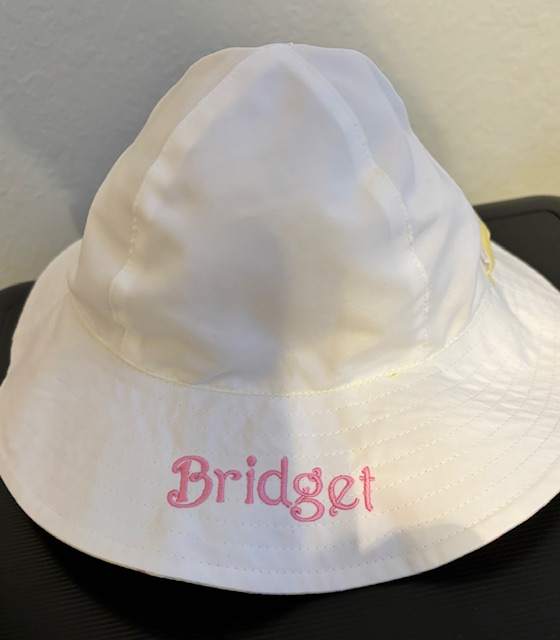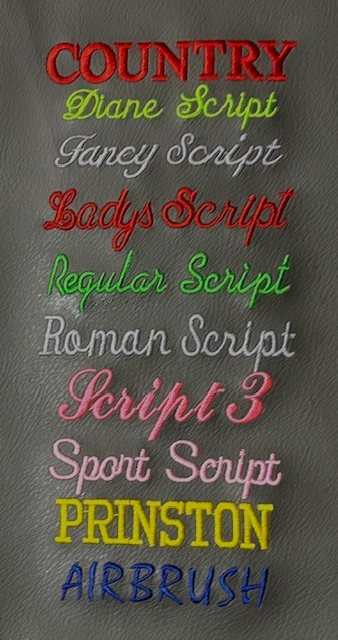The Art of Custom-made Needlework: Opening the Keys to Creating Distinct and Unforgettable Styles
Needlework, a craft soaked in custom and virtuosity, holds within its intricate stitches the power to change material right into a canvas of one-of-a-kind expression. The secrets to developing custom-made needlework layouts that astound the eye and leave a lasting impression lie in a delicate balance of technique, imagination, and interest to detail. As we explore the world of customized embroidery, we uncover the nuanced interplay between string option, sew intricacy, and style customization that raises a mere garment to an artwork. Join us on a journey via the art of personalized needlework as we untangle the secrets behind crafting genuinely extraordinary and unique creations.
Picking the Right Embroidery Threads
When choosing needlework threads, what essential variables should you consider to make sure the very best outcomes for your custom styles? The choice of needlework thread is vital in determining the last outcome of your stitched style. Among the main considerations is the product of the string. Different materials such as cotton, polyester, rayon, and silk use differing degrees of sheen, toughness, and appearance. It is necessary to pick a string product that enhances the fabric you are embroidering on and aligns with the preferred appearance of the style.
Thicker strings can include dimension and texture to your design, while finer strings are suitable for elaborate details and tiny message. Additionally, considering the shade fastness and washability of the thread is crucial to make certain that your custom-made designs keep their high quality and vibrancy over time.
Exploring Various Stitch Techniques
To explore the realm of 'Discovering Different Stitch Techniques', one need to understand the intricacies and subtleties that each stitching approach gives the art of embroidery. Various stitch methods not just add aesthetic passion but likewise add to the total texture and measurement of the design. One prominent stitch technique is the satin stitch, which entails closely jam-packed parallel stitches to create a smooth and glossy surface, perfect for filling out forms and producing bold describes.
On the other hand, the backstitch is a versatile technique frequently used for outlining and adding great details. It includes sewing in reverse to create a solid line of needlework. In addition, the French knot stitch adds a tactile aspect to layouts, excellent for creating textured accents like flower centers or ornamental touches.
Discovering various stitch techniques allows embroiderers to play with light, darkness, and deepness within their layouts, boosting the visual appeal and creative high quality of their needlework projects. By understanding numerous sewing techniques, one can open unlimited possibilities for producing special and remarkable custom embroidery pieces.
Incorporating Personalized Layout Components
Having explored the intricacies of different stitch techniques such as the satin stitch, backstitch, and French knot, the focus currently changes in the direction of including personalized style components in custom embroidery jobs. Customized style elements play an important function in making embroidery projects truly one-of-a-kind and remarkable. One method to integrate customization is by adding initials, names, or substantial days to the style. This not only includes a tailored touch yet likewise enhances the nostalgic worth of the embroidery item.
An additional way to include individualized layout components is by including icons or motifs that hold unique meaning to the recipient or mirror their interests and individuality. Integrating a favorite flower, pet, or hobby-related symbol can make the needlework layout much more purposeful and customized. In addition, choosing shades that resonate with the recipient or line up with the click over here now desired theme can additionally enhance the personalization of the needlework task.
Mastering the Art of Shade Control

One trick aspect of shade coordination is recognizing color concept. This includes understanding exactly how various colors communicate with each various other, the emotions they communicate, and how they can be integrated to develop visually attractive designs. By applying shade concept concepts, embroiderers can develop unified color combinations that boost the overall look of the layout.
Additionally, focusing on comparison is essential in shade control. Utilizing contrasting colors can assist specific components of the design pop, enhance clarity, and develop a visually dynamic embroidery item. By understanding the art of shade coordination, embroiderers can raise their styles and develop memorable pieces that resonate with customers and visitors alike.
Enhancing Appearance With Advanced Embroidery Stitches

Bullion knots, on the various other hand, can be used to develop twisted, ropelike elements that add a glamorous feel to the embroidery. Experimenting with these advanced needlework stitches permits you to press the limits of conventional embroidery and develop genuinely special and aesthetically appealing textures in great post to read your layouts.
Verdict
In final thought, the art of customized embroidery entails a mix of selecting the right strings, discovering different stitch techniques, integrating personalized design components, grasping color control, and improving texture with innovative stitches. By comprehending and executing these key components, embroiderers can create one-of-a-kind and unforgettable designs that showcase their creativity and skill. Needlework lovers can open the tricks to developing attractive and bespoke pieces that attract attention and leave an enduring impression.